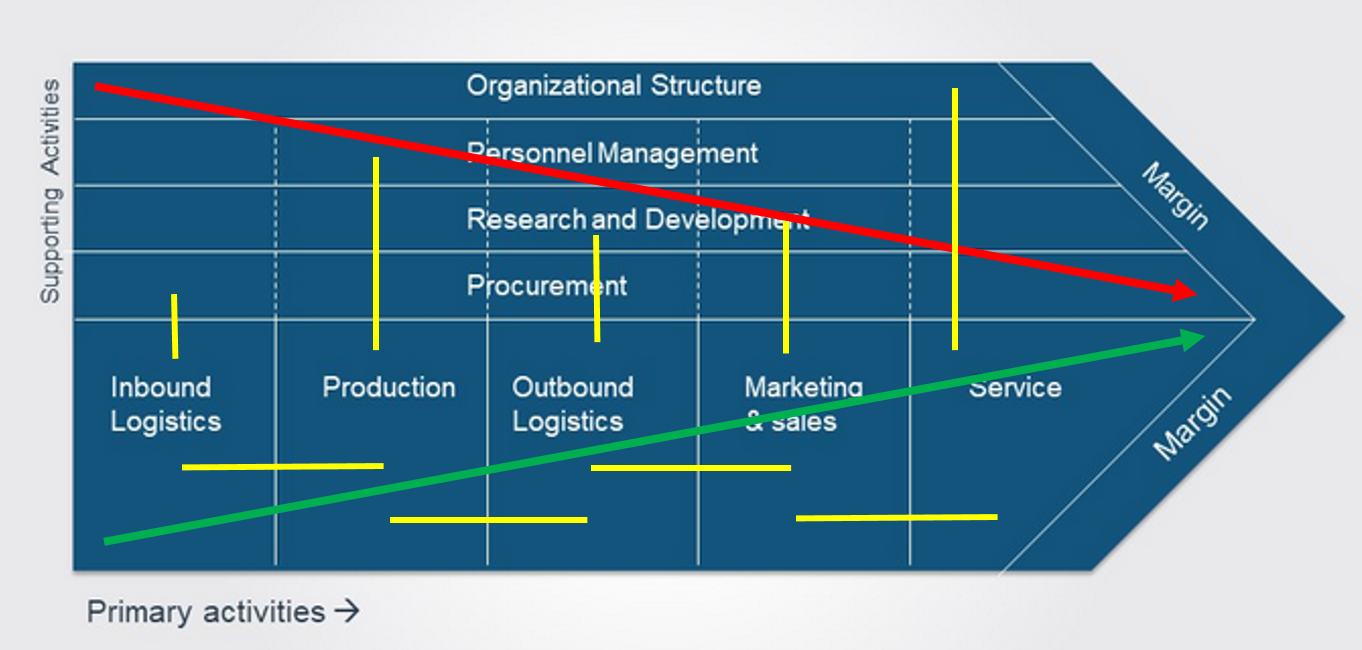Every business leader understands the importance of a sound strategy to take their business to the next level. Developing this strategy requires a close analysis of the business and a keen understanding of the key drivers. But knowing what to analyse is sometimes tricky.
This is when the hard work starts – fortunately there are a number of strategy gurus who have already done the hard work for us by assembling a number of very useful frameworks that focus the analysis efforts onto key areas of the business. So which frameworks should we use?
The analysis should start at a high level and use a few generic frameworks which provide some valuable insights into the business and highlight a few critical areas that will need further scrutiny. As the scrutiny delves deeper into the industry specifics and business functionalities, we employ the specific frameworks developed to analyse those areas of the business.
Michael Porter of Harvard Business School developed a number of very useful frameworks, one of which, Porter’s Value Chain Analysis, I’m going to discuss in this blog.
Porter’s Value Chain Analysis
Every organization, whether supplying goods or services, has a value chain i.e. the collection of activities that are performed by a company to create value for its customers. Porter’s Value Chain Analysis dissects the organization’s activities into a generic value chain and highlights the key tenets of Value Creation in the Value Chain. Value Creation creates a competitive advantage for the organization.
The strength of Porter’s Value Chain Analysis is the focus on the systems and activities with customers as the central principle, rather than on departments and expense categories. It links systems and activities to each other and demonstrates what effect this has on costs and profit.
Using Porter’s Value Chain Analysis
While it appears to be a straightforward, the framework looks at a number of key aspects in a business.
The model is depicted below, and has separated the generic activities of the organization into nine key activities. These nine activities are further grouped into:

- The Primary Activities (Inbound Logistics, Production, Outbound Logistics, Marketing and Sales, and Services) directly add value to the customer, and consequently add value to the business.
- The Secondary Activities (Organizational Structure, Personnel Management, Research and Development, and procurement) support the organization’s Primary Activities and will also affect the value of the business.
How to Identify and Add Value in your ERP Using Porter’s Value Chain
The lower half of the diagram (the Primary Activities) are the successive steps that the material follows as it flows through the operations process. The raw material enters the organization via Inbound Logistics, is transformed into goods in Production and delivered to the customer or stored in the warehouse, the Outbound Logistics function. Marketing and Sales sell the goods and Services takes care of support for the product. Every one of the Primary Activities physically handles or directly supports the product and the customer. The value creation increases as the product flows through the value add steps (Green arrow).
The upper half of the diagram (the Support Activities) erodes the value created by the operations as these are costs that the company must bear to support the operations. This is not to say that the functions are not required, but rather that these functions need to be focussed on supporting the value creation process. The Organizational Structure houses the executive team, who set strategy, manages the finances etc.
The right hand side is the margin, or profit the business makes.
To add value, the margin must be maximized in the Primary Activities and minimized in the Secondary Activities. But how?
The secret lies in the strength of the linkages between the functions. The yellow lines indicate some of the linkages that exist, but in reality there will be a wagon wheel of linkages between every function on multiple levels of leadership.
Let us examine a linkage (which creates a series of linkages to other functions):
Organizational Structure to Service
The service costs of a particular product are twice every other product based upon analysis by finance. Services feedback to Organizational Structure and Organizational Structure trigger a series of investigations by Research and Development which culminates in a finding that the products are poorly packed. The Personnel Management function is tasked to develop and train the staff to better pack the item while Research and Development develop a new packaging system. It is this synergy that adds value to the organisation.
To manage, monitor and leverage for optimal value creation, all these linkages across the supply chain requires a comprehensive business system like an ERP (Enterprise Resource Planning) system.
Although an ERP system cannot mitigate incorrect strategy, it will ensure full integration across the organization, improving the linkages and, ultimately, enhancing the flow of critical information.
Look out for my next blog that will delve a little deeper into the Porter Value Chain for specific industries.






